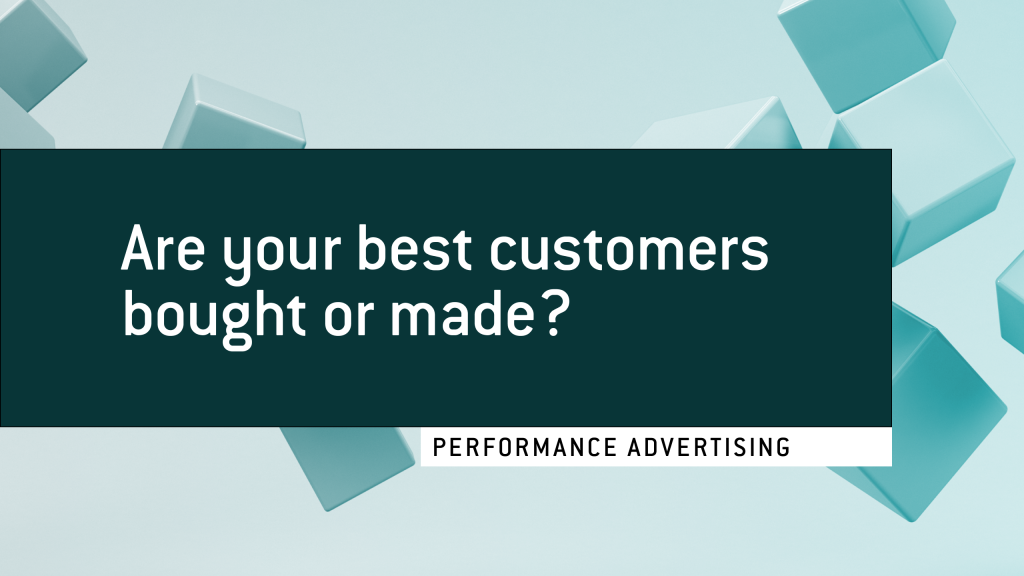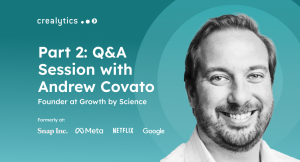New customers who return after their first purchase tend to be highly loyal and make repeat purchases over time. Does this imply we should advertise aggressively to everyone who bought for the first time? Or is it better to identify and acquire the ones most likely to keep returning?
Crealytics’ CEO Andreas Reiffen examines whether your best loyal customers are bought via ads or existing ones you’ve nurtured.
The nature vs. nurture argument applies to performance advertising, too. All retailers want to attract more of the best customers (the loyal, high-spending types). But what separates this group from the merely okay or average ones?
Are some shoppers predisposed to spend more, and more often? (The “nature” argument.)
Or do our ads enhance their commitment to a brand, resulting in more indulgent spending? (The “nurture” argument.)
It’s an interesting discussion, and central to present-day performance marketing. Because if there’s one conversation I’ve had more than any other with industry peers, it’s about customer loyalty.
Many experts insist that how and where you acquire customers matters less than getting them to make their second purchase. Making a second purchase elevates them to the status of must-focus-on-at-all-costs.
Is there any evidence for this? Or is it a myth? Here’s what the data revealed.
Looking into the numbers: Predicting lifetime values
Crealytics put this theory to the test by following two groups of customers – and their accumulated margins – over a 12-month* period. We tracked Group A after they had made their first purchase. We tracked Group B after they had made their second purchase.
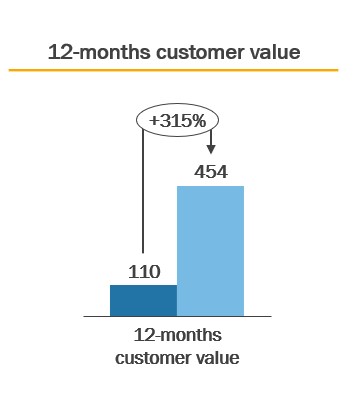
Group B displayed 315% more lifetime value than Group A. Should we simply throw as many ads as possible at this group based on their superior value? Not so fast.
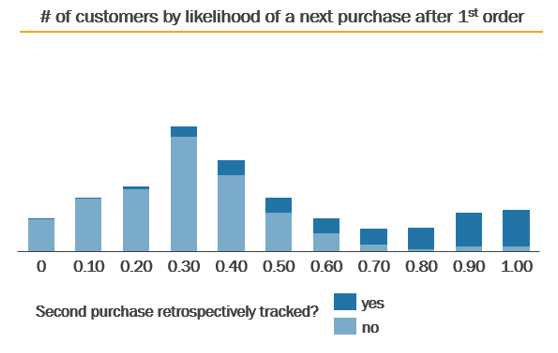
We wanted to know how likely each customer was to make a second purchase after they’d made their first. So we looked at the data from a different angle by running a customer lifetime value prediction model.
Not only do the models show heterogeneity between customers, they also confirm our predictions. The dark blue segment represents customers we tracked retrospectively, in other words, the shoppers we expected to return.
The light blue represents those shoppers we expected not to return.
This indicates that we shouldn’t fire ads at everyone in order to make them good customers (nurture). In fact, the opposite is true. Some shoppers are inclined to buy more than once; others tend to be one-off purchasers – and this remains true regardless of how many ads you show them.
How can we acquire better customers upfront through performance advertising?
Of course, we’re not saying that ads in general don’t work! Rather, we need to be careful how we use and what we do with them. Identifying the best possible customers up front makes sense. But how can apply this principle to performance advertising?
One approach is data activation. I’ll walk you through the process below – but in a nutshell, it involves incentivizing your biddable media systems to yield new, loyal customers.
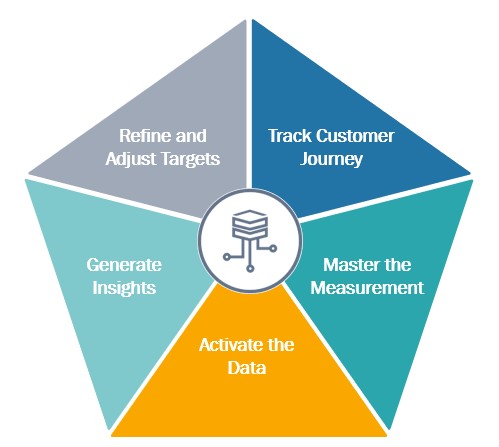
It starts with tracking the customer journey. People click on different ads on their route to making a purchase. When this purchase happens, we need to assess the value of each click within that journey – and this starts with assessing the order margins.
Armed with this first order’s exact margin, we then predict the customer’s future value over their “lifetime” (e.g. 12 months) and combine it with the margin, resulting in a comprehensive lifetime value. Finally, we need to question whether the transaction would have happened regardless of the clicks along the way. Accounting for attribution and incrementality leave us with a final value-per-click.
Feeding your media platform these values re-incentivizes it toward more valuable targets (new customers, high-margin products, low-return rates).
Once we have the right data on a per-click level, and can predict the value of future purchases, we can go beyond assessing performance based on first-purchase revenues.
The insights are mouthwatering. We can look at how much we sold (in terms of margin) to new and existing customers. We can evaluate a group’s repeat purchases within a given time frame, and outside it.
Most excitingly, we can qualify real ROI – including repeat purchases over time – unlocking a far more advanced form of campaign optimization.
The richer your analysis, the better you can invest budgets and acquire the most loyal, new customers.
Beyond insights, it becomes a matter of refining and adjusting your targets. And you can do this by comparing attribution calculations with the results of your incrementality measurements. Did your prediction models work? Was there a gap between what you expected vs. what you saw retrospectively? Maybe you decide to invest more aggressively, and thus extend your time horizon from 12 months to 24 months.
In a nutshell: you’re no longer optimizing for old school metrics like keywords or landing pages – your system’s AI can handle all that. Instead, your focus is all about the measurement side to maximize your investment.
Acquiring better customers upfront using lookalike audiences
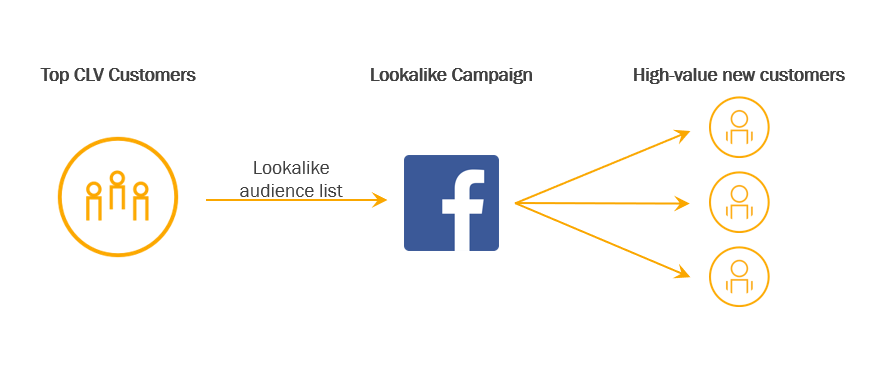
Value-based audience lookalikes provide a second route to acquiring new, loyal customers. We associate this with paid social channels, but it can be applied to paid social, too.
Paid social channels like Facebook make it a very straightforward process. Once you’ve identified your top CLV customers, you use them to build lookalike audience lists. From there, the campaigns target high-value new customers.
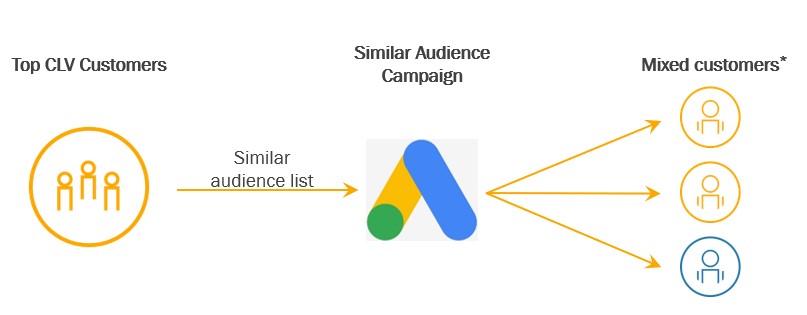
Google offers something similar (albeit more limited) in the form of Similar Audience Campaigns. Beware: unlike text ads, Google Shopping doesn’t allow audience exclusion lists. This means you’ll always end up with a mix of similar good customers and existing customers.
New, loyal customer acquisition unlocks a competitive advantage
Performance marketers are living through a period of huge change, with advanced AI leveling the playing field by increasing (and standardizing) campaign efficiency.
This is a good thing. Leaving the heavy lifting to Google and co. allows us to focus on strategic advantages. Using smarter metrics – including the prioritization of new, loyal customers – remains key to this.
We know that good, loyal customers are bought rather than made. The better you become at acquiring more of them, the healthier your organization’s long-term outlook.

